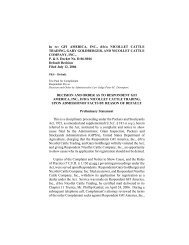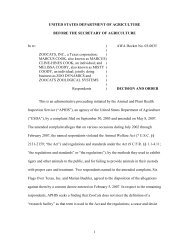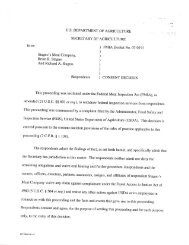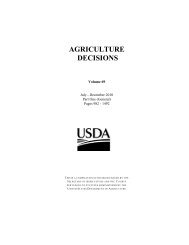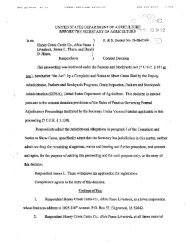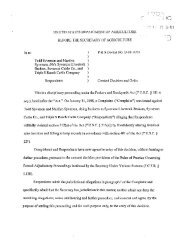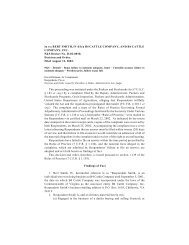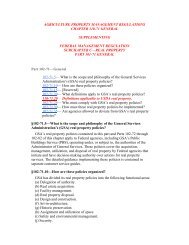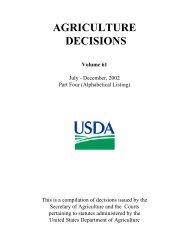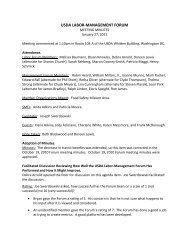Green Information Technology Strategic Plan - Departmental ...
Green Information Technology Strategic Plan - Departmental ...
Green Information Technology Strategic Plan - Departmental ...
Create successful ePaper yourself
Turn your PDF publications into a flip-book with our unique Google optimized e-Paper software.
CO2 in tons<br />
8.5 Data Center Consolidation<br />
The Midwest data center, National <strong>Information</strong> <strong>Technology</strong><br />
Center (NITC), has an average PUE ratio of 1.69. The EPA<br />
has recommended to Congress that all Federal data centers<br />
achieve a PUE ratio of 1.7 by 2011. Judging by the estimates<br />
that many data centers have a PUE above 3.0, we can assume<br />
that the rest of the USDA has a PUE ratio of around 5.0.<br />
Through these PUE ratios, it can be determined that USDA<br />
data centers will have consumed 340,096,830 KWh in 2008<br />
for all IT equipment power and cooling needs.<br />
This energy consumption translates to about 224,464 tons<br />
of carbon emissions for 2008 and could increase to be<br />
approximately 293,357 tons of carbon emissions for 2009.<br />
EPA calculations show that energy consumption of servers<br />
and associated data center infrastructure has doubled in the<br />
past five years and is expected to almost double again in the<br />
next five years. If nothing is done to slow this growth, then<br />
the USDA could be held accountable for 488,928 tons of<br />
carbon emissions from data center operations alone (Fig. 12).<br />
fig. 12<br />
500,000<br />
400,000<br />
300,000<br />
200,000<br />
100,000<br />
0<br />
Projected Growth in Data Center CO 2 Emissions Before Consolidation <strong>Plan</strong><br />
Supporting Environmentally Responsible <strong>Technology</strong> at USDA<br />
2008 2009 2010 2011 2012 2013<br />
Year<br />
A problematic area, but also an opportunity in waiting is<br />
that USDA servers are computing at an estimated average<br />
of 15% of their capacity during a 24-hour period. This is<br />
due to the need for excess space for peak processing times,<br />
the variation in processing times across applications, and<br />
overestimates for workload and space. These issues cause<br />
servers to be idle for much of their IT lifespan. When a server<br />
is not processing information, it is still using electricity for<br />
power and cooling. If server utilization rates were improved<br />
and power management technology and techniques were<br />
employed to scale down power when servers are not in use,<br />
USDA would make significant improvements for decreasing<br />
power consumption and CO 2 emissions.<br />
Carbon Reduction <strong>Plan</strong><br />
Advances in IT allow an organization to reduce equipment<br />
through consolidation. There are three phases of<br />
consolidation that the USDA must complete in order to<br />
reduce equipment, increase energy efficiency, and reduce<br />
65




